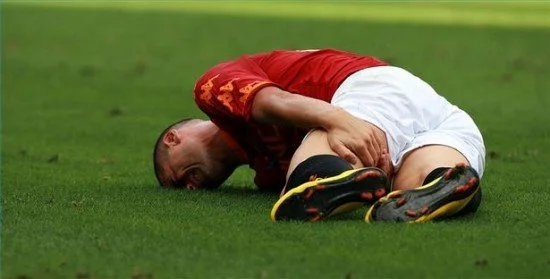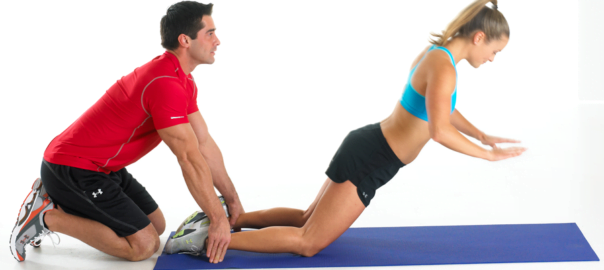Understanding Hamstring Injuries
What are the hamstrings?
The hamstrings are a group of muscles located at the back of the thigh. They consist of the Biceps Femoris (long & short head), Semitendinosus and Semimembranosus. These muscles cross both the hip and knee joints, meaning they help with hip extension (moving the thigh back) and knee flexion (bending the knee).
Mechanism of injury
Hamstring injuries often occur through two main types of mechanisms:
High-speed running (sprint/acceleration) type: Multiple studies show that in sprinting the hamstrings are under great eccentric load during the late swing phase of gait (when the leg is moving forward, hip flexing and knee extending) — this is especially so for the Biceps Femoris long head. BioMed Central+2ScienceDirect+2
Stretch‐type injuries: These occur when the hamstrings are forcefully lengthened, for example with simultaneous hip flexion and knee extension (such as in kicking, hurdling or lunging) thus overstretching the muscle-tendon unit. BioMed Central+1
In summary: when the hamstrings are contracting eccentrically (lengthening under load) or being overstretched, they are at higher risk of strain. Physiopedia+1
Risk factors & why this matters
Some of the commonly identified risk factors include:
Previous hamstring injury (makes re‐injury more likely) University Orthopedics Blog+1
Muscle-imbalance (hamstrings weaker relative to quadriceps) or poor eccentric strength.
Fatigue, poor motor control of the pelvis/hip region, limited warm‐up or high-speed transitions. ScienceDirect+1
Age, and older athletes may be at greater risk. Physiopedia
Why does this matter? Because hamstring injuries are common, can be slow to heal, and have high recurrence rates — meaning if not treated well, you may keep coming back. University Orthopedics Blog
How Physiotherapists Treat Hamstring Injuries
At Physio Solutions Merrylands, we follow evidence-based, phased rehabilitation for hamstring injuries. Here’s how it typically looks:
1. Assessment & early phase
We begin by taking a detailed history: how the injury occurred (sprinting vs stretching), what the symptoms are (pain at back of thigh, “pop” feeling, bruising/swelling) and then a physical exam: pain with muscle contraction, reduced strength, limited range of motion. Physiopedia+1
Early in rehab (first days to ~2 weeks) the goals are to:
Protect the injured tissue (avoid over-stretching or excessive load)
Manage pain/inflammation (ice, gentle modalities, load modulation)
Begin gentle mobility, muscle activation (isometrics, glute/quad sets, hip and knee assistive movement)
Address any associated issues: pelvic/hip control, neural tension (sciatic nerve may be irritated) Physio Network
2. Intermediate phase – strength & control
Once pain is reduced, mobility is improving, we progress to:
More dynamic strengthening, especially eccentric hamstring training (because eccentric strength is one of the key modifiable factors in preventing further injury).
Exercises to restore hip, glute, core control (because hamstring function depends on the whole kinetic chain).
Gradual return to functional tasks: light running drills, change of direction, deceleration. Massachusetts General Hospital+1
Manual therapy as needed: soft tissue release, myofascial work, neural gliding if nerve-tension present.
3. Return to sport / full activity
Before full return, we make sure:
Strength and functional benchmarks are reached (e.g., hamstring strength symmetrical to other side, good range of motion, good control of hip/knee in dynamic tasks). Physio Network
Gradual exposure to high-speed running, sprinting (if relevant), kicking or sport‐specific movements with monitoring for pain or compensation.
Education on prevention: warm-up protocols, ongoing eccentric hamstring exercises, monitoring training load, ensuring proper recovery.
Why our approach stands out at Physio Solutions Merrylands
Our team has the expertise in musculoskeletal and sports rehabilitation and understands the subtleties of hamstring injury mechanisms (so we don’t treat everyone the same).
We tailor the rehab to your goals (whether you’re a weekend warrior, footballer, sprinter or someone whose primary goal is to just return to gym/walk).
We emphasise prevention of recurrence — because we know how common re-injury is if the rehab is incomplete.
Located in Merrylands, we are conveniently accessible for the Western Sydney community — offering a supportive environment with up-to-date therapy and personalised care.
What You Can Do Now (Before or During Rehab)
Warm-up properly before high-speed, sprint or change-of-direction activities — dynamic hamstring drills, activation of glutes/hips.
Incorporate eccentric hamstring exercises (for example, variations of the Nordic Hamstring Curl) into your training or rehab.
Monitor training load: avoid sudden large increases in sprinting, speed work, deceleration tasks if you’re recovering or have history of hamstring issues.
Ensure hip, glute and core strength is maintained — these are important to support the hamstrings and reduce risk.
If you feel a sudden sharp pain at the back of the thigh, or you had a “pop” sensation while sprinting/kicking, seek physiotherapy assessment early — early management often leads to better outcomes.
Why Choosing Physio Solutions Merrylands Helps You
Located in Merrylands, our clinic is well-equipped to assess and treat hamstring injuries, from acute onset through to full return to sport or activity.
We apply the latest evidence and best practice protocols — understanding that hamstring injuries require careful progression and prevention of re-injury.
We offer personalised programs: one size does not fit all when it comes to hamstrings. Whether you’re a weekend jogger, a competitive athlete or have an everyday activity goal, we customise your rehab.
We understand the local community in Western Sydney, and aim to make your recovery smooth and convenient.
Final Thoughts
Hamstring injuries are common, potentially frustrating and carry a risk of recurrence if not treated appropriately. By understanding how they occur, and engaging with a specialist physiotherapy clinic like Physio Solutions Merrylands for assessment, targeted rehab and prevention strategies, you’ll give yourself the best chance of a full recovery and getting back stronger and safer.
If you or someone you know is experiencing posterior thigh pain, suspect a hamstring strain, or has a history of hamstring problems and wants to prevent re-injury — get in touch with us. We’d love to help you get back to doing what you love (pain-free) and keep you moving.
Call to Action:
Contact us today at Physio Solutions Merrylands to book your assessment. Let us help you recover, restore, and return to full function.








